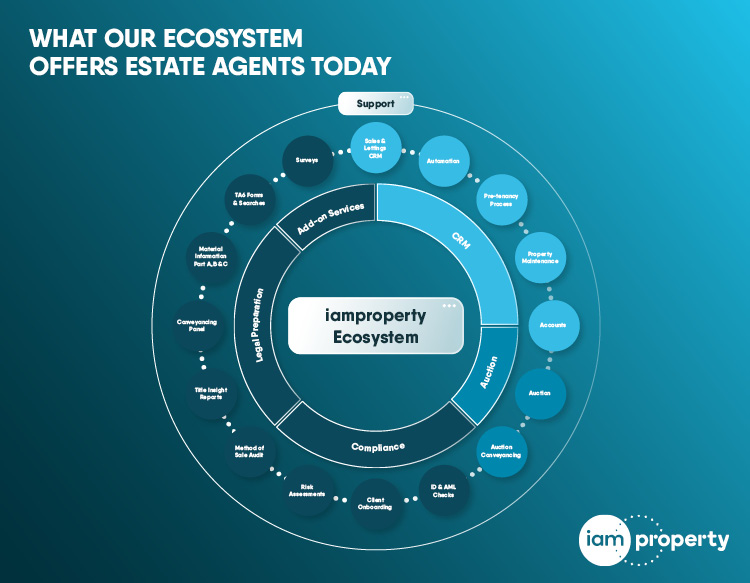To those working within the conveyancing sector, the recent statistics from the Legal Ombudsman regarding complaints are perhaps not surprising.
In our marketplace I don’t think we can shy away from the fact that 23% of all the complaints it received were about conveyancing, neither should we.
One of the reasons why we established the Conveyancing Association was to tackle some of the major stumbling blocks that come up during the conveyancing process and to move to a point where the introduction of, some simple common-sense measures, would do a great deal to cut down on the delays, communication issues, information gaps, etc, that often lead to client frustration and subsequent complaints.
All stakeholders within the conveyancing process – and let’s be honest there are a large number – have a role to play here and estate agents are not immune from this.
In fact, they have a central position and, by acting as the middle-man/woman between conveyancing firm and client(s), they can do a great deal to firstly, keep all parties informed, but also to manage expectations around when a completion might be possible.
Back in 2014 the Association published its Estate Agent Best Practice Guide which effectively focuses on the issue of communications and the way in which we can keep these channels open between both agent and conveyancer, and agent and client.
It’s a series of straightforward suggestions about how we might go about doing this, including the introduction of structured progress calls between conveyancer and agent, returned calls and emails, weekly updates on the progress of all transactions, predicted exchanges at the start of each month with progress updates as the month progresses, and some best practice guidance points that both sides can commit to.
This guidance plus the ongoing work we are conducting with agents, which includes online Progression Training about the conveyancing process, is really designed to get away from the old approach between agents and solicitors which could sometimes be rather contentious.
You would often hear tales of conveyancers completely ignoring the agent, not answering calls, with no commitment to keeping them in the loop. Certainly not appropriate in today’s world.
Members of the Association were keen to distance themselves from this type of relationship, recognising the role that agents can play with their clients in keeping their frustrations to a bare minimum. A regular and open-ended communication channel goes a long way to doing this – I think we all know that when it starts getting quiet on a case, the problems often begin.
The other important touch point for conveyancer and agent is around the chain itself and being able to pass information up and down that chain. This is especially helpful for longer chains where the bottom may get sorted very quickly, however the top doesn’t.
Again, it’s helping clients to understand that those at the top will need to go through the same process as they’ve been through, and therefore the likelihood of the process taking 10-12 weeks (perhaps a lot longer) is always there.
As an aside, getting away from the ‘on average cases take six to eight weeks to complete’ comments would be helpful – I think we all know (and most industry surveys confirm) that 10-12 weeks is much more likely.
Again, working together in a collaborative approach, which recognises that we are all working towards the same end goal of exchange in the quickest time possible, is absolutely vital.
Managing the client’s expectations and acting as that conduit between conveyancer and client can certainly help cut down on the number of complaints that develop from a process which can take time to piece together.
Certainly, the Association and its members are absolutely committed to working together with all stakeholders in order to deliver greater understanding of the conveyancing process through increased communication, and improving the overall customer knowledge and experience.
We know that a world without conveyancing complaints is nigh on impossible but together we can move towards a situation where they are far less prevalent.
*Eddie Goldsmith is Chairman of the Conveyancing Association










.png)


.jpg)
.jpg)





%20-%20IMAGE%20Client%20Accounting%20%E2%80%93%20what%20are%20your%20options.jpg)


.png)
.png)
.png)
%20(002).png)






%20(002).jpg)



.png)



Join the conversation
Jump to latest comment and add your reply
Hello Eddie
How many complaints about the conveyancer or EA are set to exist even before any service (following the sale) has been given?
The answer – A lot of them.
As you and I have discussed before (2014) the memorandum of sale is the first culprit of client dissatisfaction. You take Mr and Mrs Smith, they’ve not moved for 27 years and they’ve just accepted an offer on their home. Two days later and a memorandum of sale arrives with ‘Expected Completion Date’ (or words to that effect) written on it. More often than not for a wholly unrealistic 6-8 weeks down the line. Why? Well, that’s what most agents staff trot out to their customers.
The total absurdity of this is (and always has been) beyond comprehension.
So now this nice couple ‘KNOW’ their moving date. How do they know? The agent has told them, and put it in writing. It isn’t this couples fault that they invest their trust in the first ‘knowledgable professional’ they dealt with – The Agent. It is the agents responsibility to manage the expectations of the client.
From this point on, you’re ALL doomed to failure on the customer satisfaction front because this couple can only ever suffer the emotional trauma of the date not being met.
That’s the first thing you all need to fix. Stop giving the client unrealistic promises at the very start. Simply tell the truth. Make an effort to track the average offer to completion timescale (obviously it differs year to year, qtr to qtr, and across economic cycles) and tell them the truth. More importantly do NOT put a specific date on it.
This is a prime source of frustration, and absolutely down the line leads to many of the complaints. ‘The solicitor is useless he/she had the date months ago’ < Yes, and instead of your solicitor saying ‘the agents an idiot’ he or she was non-committal, and handed a pacifier sentence down the phone like ‘that is still technically possible Mrs Smith’ Whilst thinking ‘not effing likely though’, so again the client walks away ‘knowing’ the date.
‘The agent lied about everyone working toward the date, they knew the date months ago’ So don’t talk dates!
This is problem number one toward reducing the complaints at the end. There are many more to discuss, but I’m not going to hog all the page space.
p.s our data shows that 12-17 weeks is most likely
Independent estate agents or the higher value chains, they already work well together.
It is the irritating calls from other agents to ask 'have you got your searches' or 'can I have an update?' - bringing no help or information to the conveyancer. Just them ticking off their boxes to say they asked the lawyer in case their own client again screams at them for asking why they are not providing updates.
We receive so few calls, as we update our Agents once a week by a cc when updating our clients.
But to those above mentioned who are an irritant, please be of more help, as we want to work with you.
Otherwise, you might start getting calls from lawyers during the time when the property is on the market, and asking you 'so...have you listed the Property on Rightmove yet?' or ' have you provided all feedback on all viewings yet' etc.
Oh and 'please don't farm the buyer out to a conveyancer who pays you most for the lead, please respect your selling client, who will want the best conveyancer to be recommended'.
Teamwork is key. Good estate agent and conveyancer communication is key, to work together to keep the pace of the legal work as fast as it can be, as the client could otherwise lose the sale through delay and therefore cold feet, the agent loses the commission, and everyone's time is wasted.
We manage an Investor and homebuyer conveyancing panel and we are now using a binding agreement between seller and buyer which eliminates gazumping. We have focused on Buy to let and New Build but clearly we can help many residential buyers to reduce their chances of fallout and to speed up the property conveyance. This agreement was designed for Solicitors by a solicitor.
Please login to comment